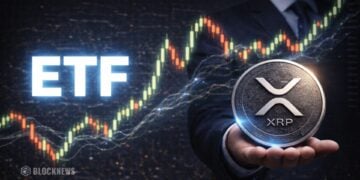Most crypto exchanges charge between 0.1% and 0.25% commission per trade. While this seems a lot for active traders who enter and exit positions daily, exchange fees increase or reduce their trading profits.
On July 8, Binance decided to embrace a zero-fees trading model. With plummeting crypto prices, Binance announced that it would suspend trading fees for 13 Bitcoin pairs. The move was followed by eliminating the costs for the ETH-BUSD trading pair from the exchange. These accounted for more than 50% of the exchange’s total volumes.
Based on the reported trading volume in Q3 tracked by Forbes, the impact was immediate for the largest exchange by trading volume. Questions now arise on whether Binance can profitably sustain this marketing strategy.
Impact of the zero-fees trading model on market shares
The decision to eliminate trading fees was unusual, as the Binance BTC/USDT trading pair is the most liquid across the market. The trading fees suspension, therefore, would mean Binance is forfeiting the profits earned from $5 billion in daily volumes. Factually, based on Forbes tracking, the first month of summer saw daily volume drops by over 67% for the universe of more than 150 crypto exchanges.
According to the reports, Binance is already witnessing benefits due to this bold marketing strategy. The company’s market share in the third quarter shows that Binance scaled to unparalleled heights, and credit goes to the bold zero-fees trading model move. Evidence of this is soaring Bitcoin volumes higher than the total value of the other 11 liquid crypto exchanges like Coinbase, Kraken, FTX, and OKX.
According to Kaiko Research Team reports, crypto markets thrived over traditional markets in Q3, but global risk sentiment affected both. In September, inflation spanned the entire United States, causing the Federal Reserve to increase interest rates for the fifth time this year.
Hiking interest rates to tame inflation caused a sell-off across financial sectors, including the cryptocurrency market. In September, Bitcoin’s correlation with S&P 500 index recorded an all-time high, and its correlation with gold was a yearly high.
Binance has a vast war chest, which makes it a formidable opponent in such a competitive market. The zero-fees trading model was a longer-term strategy to entice traders from rival exchanges.
How long can Binance sustain zero-fees trading?
Nonetheless, with the endless crypto winter, the main concern is how long Binance can sustain the zero-fees trading model. The cryptocurrency market is highly competitive, and the trading fees issue is only one competing strategy. There is the possibility that rival exchanges will retaliate with offers and promotions or adjusted fee structures.
As the bear market continues, Binance draws more traders than any other social platform. Binance’s reputable position within the crypto arena best positions it to survive the revenue drops, which explains why it embraced this trading strategy.
Eliminating trading fees for select trading pairs is working in favor of the company. This comes as Binance dominates in trading volume and challenges even the traditional markets. Nevertheless, for how long this is sustainable remains in the hands of time.














